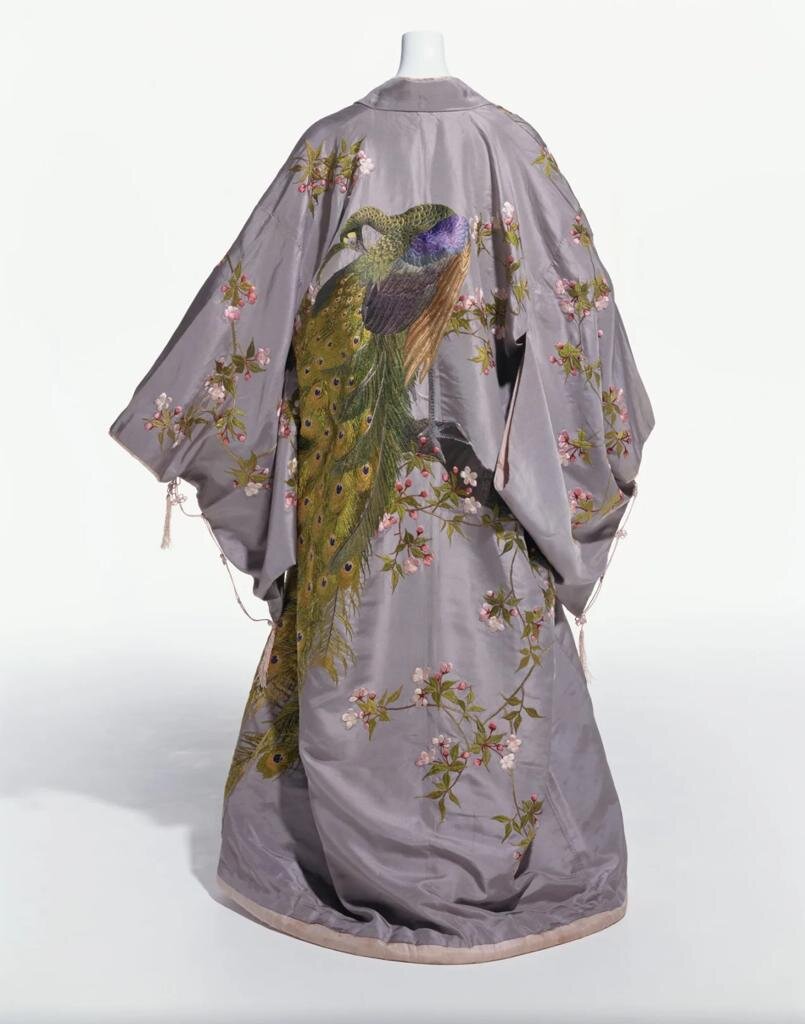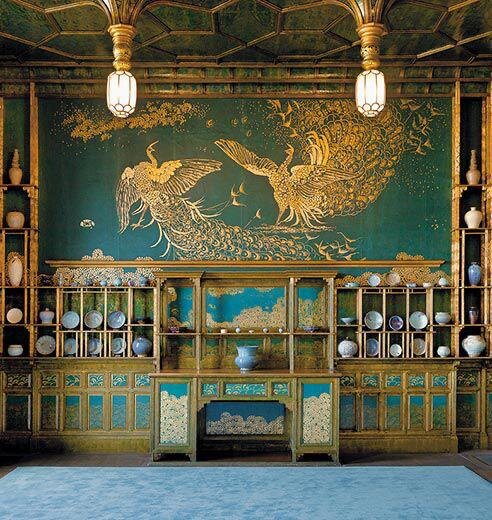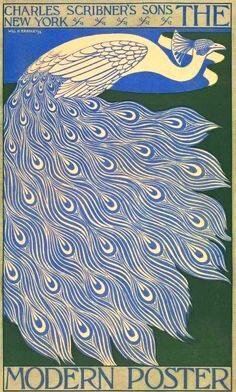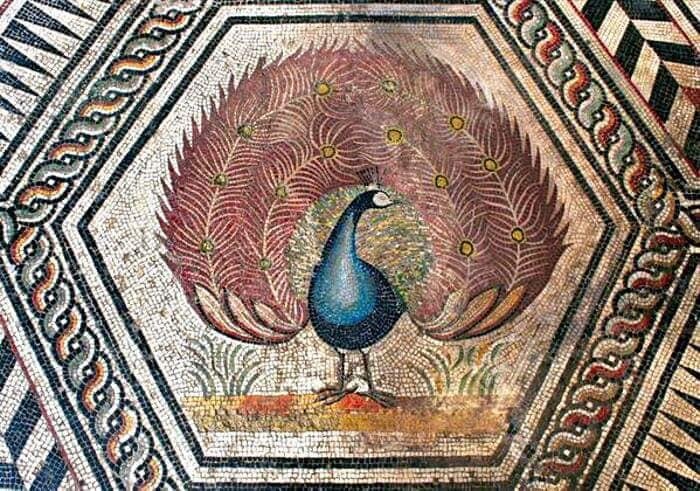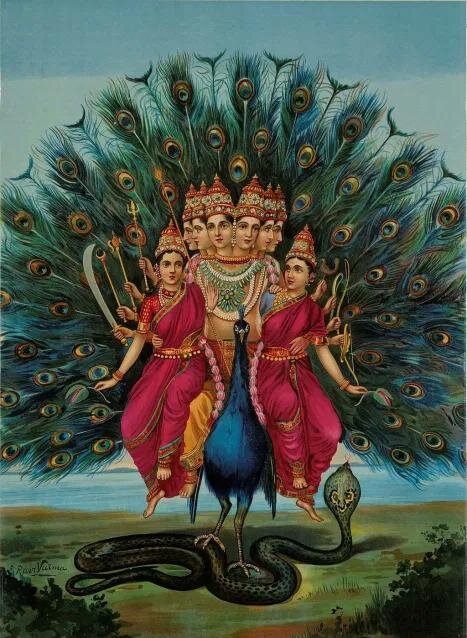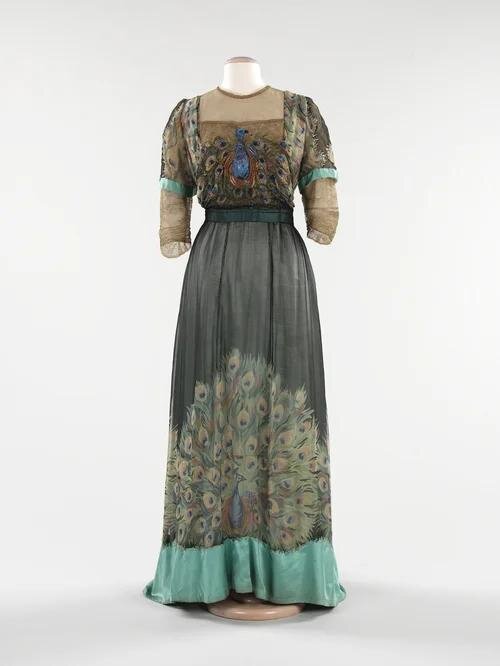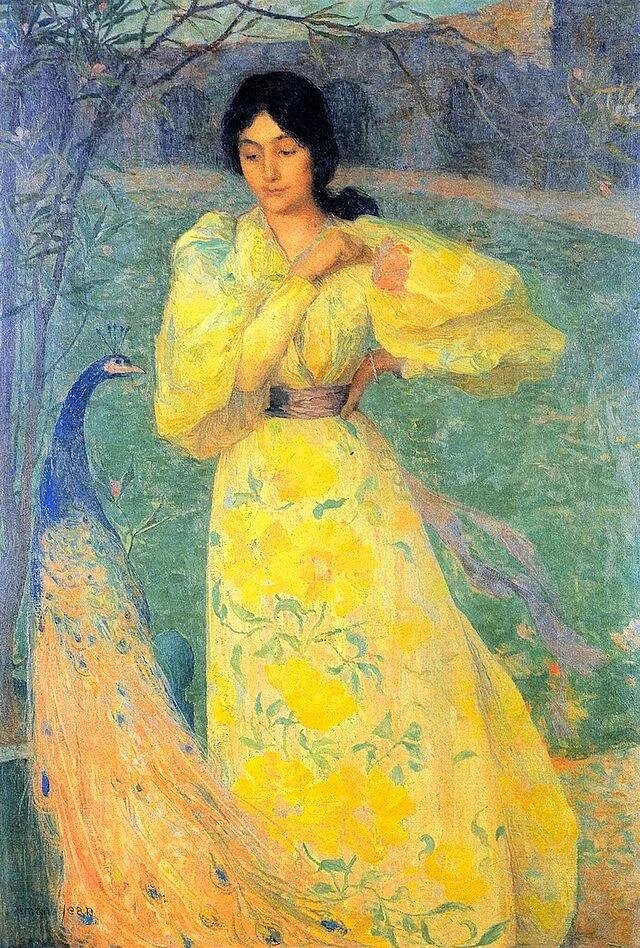whistler’s | revenge
For me, nothing is more evocative of India than the sight and sound of a peacock at daybreak. I am completely entranced by them. There can be no more exotic animal surely? And for that reason I think, there has been a long tradition of using their image in art, jewellery and fashion.
Peacocks have been a symbol of wealth, beauty and rebirth since ancient times . Their images could be found in early Christian tomb art, ancient Rome and Byzantium. In India they were a symbol of royal status and Indian rulers would have servants fan them with peacock feathers
But it was near the end of the 1800’s that peacocks became particularly popular in Western visual culture. Designers like William Morris used them on many of his designs and around the same time the bird became a prevailing symbol for a group of English artists and designers known as The Aesthetics who sought to create “art for art’s sakes: and to exalt beauty over moral expectations.
James McNeill Whistler was one of the main protagonists of Aestetheticim and is associated with an infamous peacock related anecdote. Wealthy art collector Frederick Leyland asked Whistler to make minor decorative touch-ups to his London dining room whilst he was out of town. Once left to his own devices, Whistler completely ignored his brief and instead created the most lavish interior imaginable, with beautiful vivid peacock blues and finished with real silver and gold leaf. Just to top off his demonstrable lack of respect, he also had an affair with his employer’s wife during the period of the renovation When Leyland returned, he refused to pay for the work and a huge feud ensued. As revenge, Whistler sneaked back into his house and re-painted the final panel to show two peacocks fighting. One of the peacocks is depicted with a ruffled shirt like the ones that Leyland always wore, and with silver coins spilling from his breast. The Peacock Room is now considered Whistler’s greatest work of art.
For most artists however Peacocks came to denote dignity and beauty. The peacock continued as a favoured motif into the Art Nouveau. Aubrey Beardsley used the peacock as a motif throughout his 1894 illustrations for Oscar Wilde’s play Salomé, emphasising the decadent aspect of the bird’s exquisite beauty
They were also frequently used as motifs on kimonos in Japan from the 17th century. This is turn was absorbed into many haute couture designs from then ,in part due to their exquisite patterns and shined texture, which could heighten the quality and workmanship of a fabric….
Here are some peacocks I love

